Abstract
Upon incubation of epidermal peels of Commelina communis in 1 millimolar KCl, a synergistic effect of light and low fusicoccin (FC) concentrations on stomatal opening is observed. In 1 millimolar KCl, stomata remain closed even in the light. However, addition of 0.1 micromolar FC results in opening up to 12 micrometers. The same FC concentration stimulates less than 5 micrometers of opening in darkness. The synergistic effect (a) decreases with increasing FC or KCl concentrations; (b) is dark-reversible; (c) like stomatal opening in high KCl concentrations (120 millimolar) is partially inhibited by the K+ channel blocker, tetraethyl-ammonium+ (20 millimolar). In whole-cell patch-clamp experiments with guard cell protoplasts of Vicia faba, FC (1 or 10 micromolar) stimulates an increase in outward current that is essentially voltage independent between - 100 and +60 millivolts, and occurs even when the membrane potential is held at a voltage (−60 millivolts) at which K+ channels are inactivated. These results are indicative of FC activation of a H+ pump. FC effects on the magnitude of inward and outward K+ currents are not observed. Epidermal peel and patch clamp data are both consistent with the hypothesis that the plasma membrane H+ ATPase of guard cells is a primary locus for the FC effect on stomatal apertures.
Full text
PDF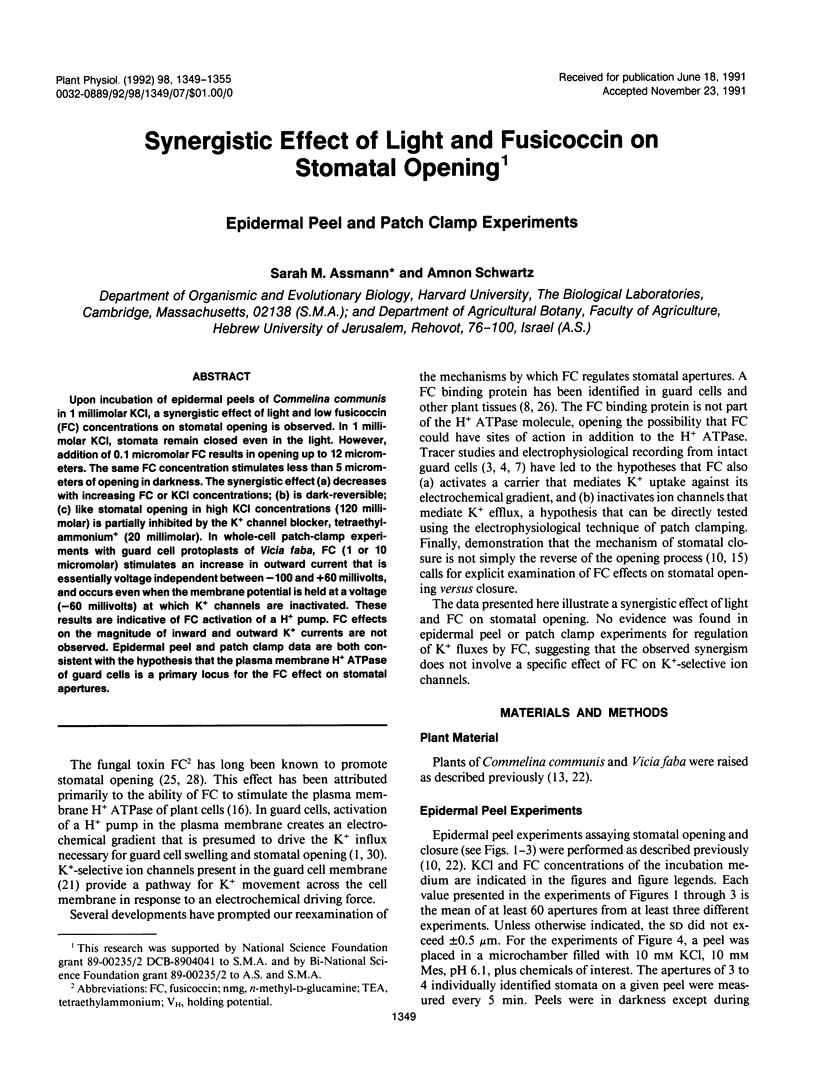
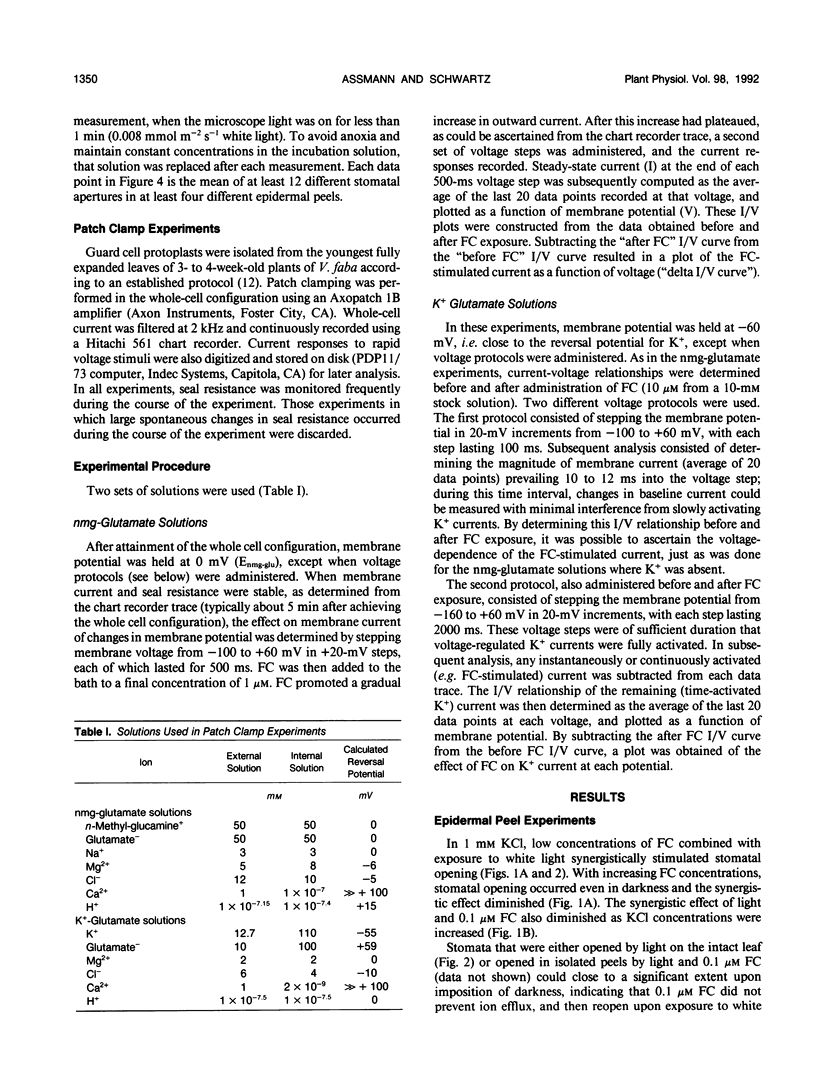
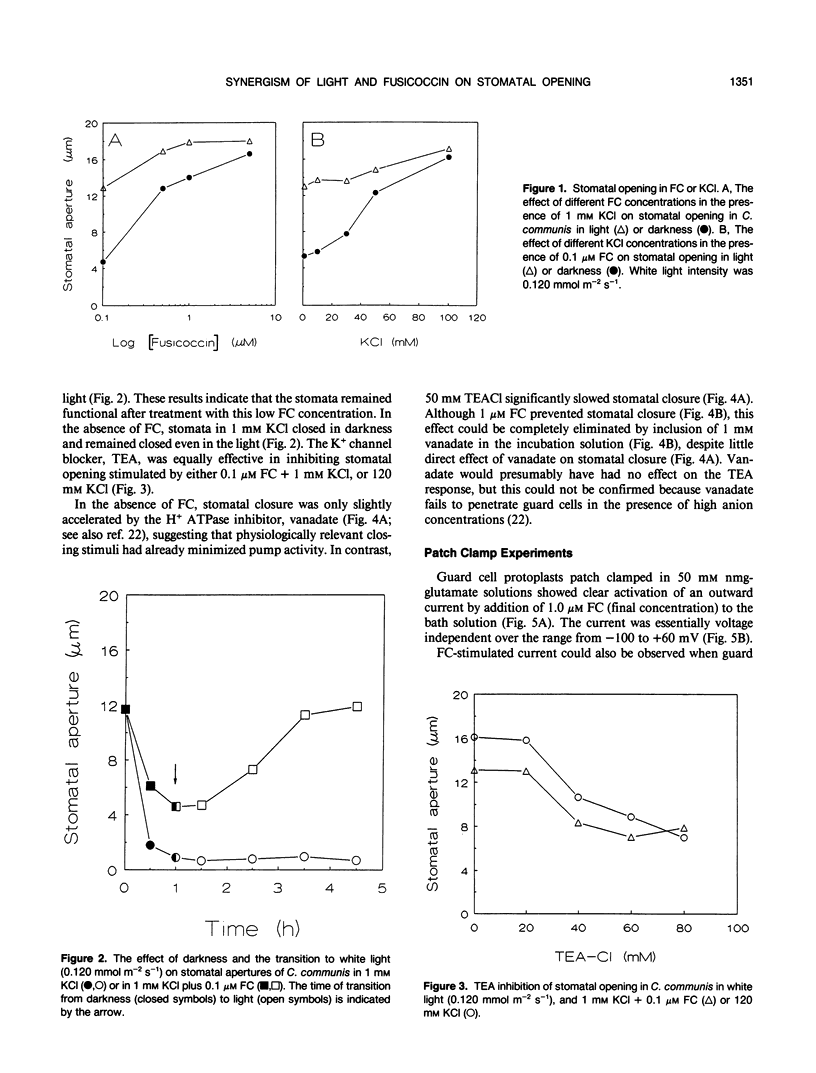
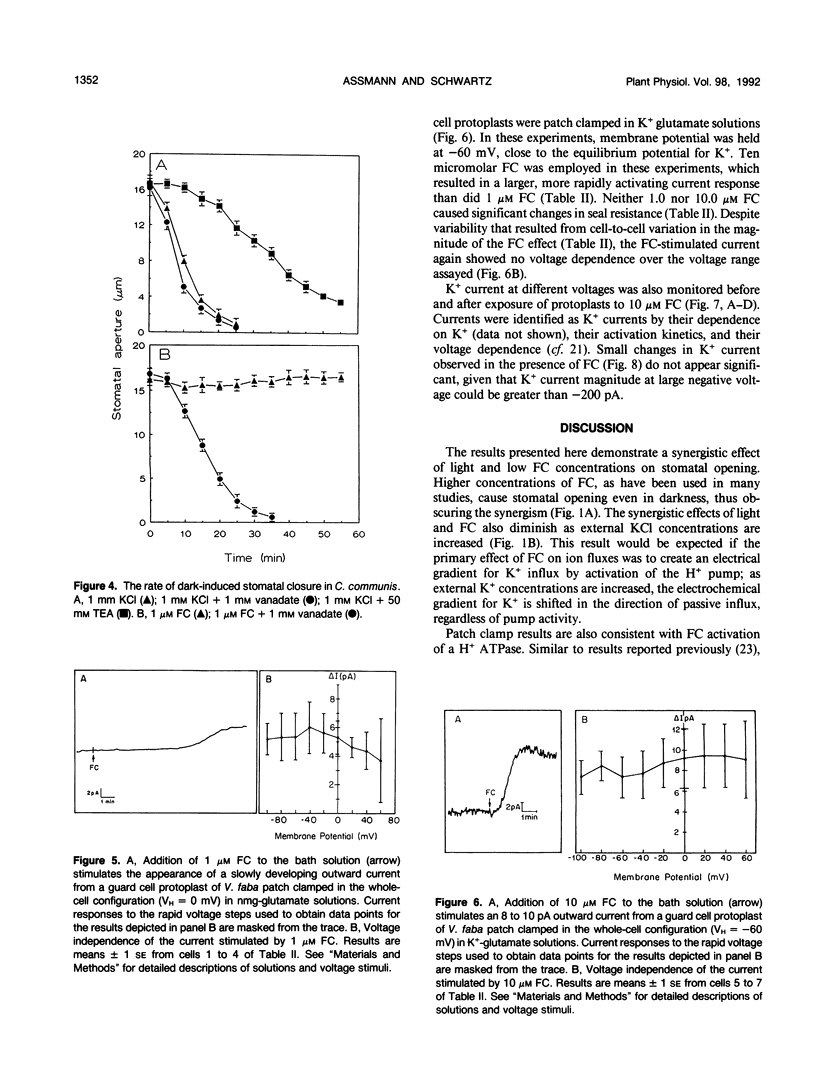
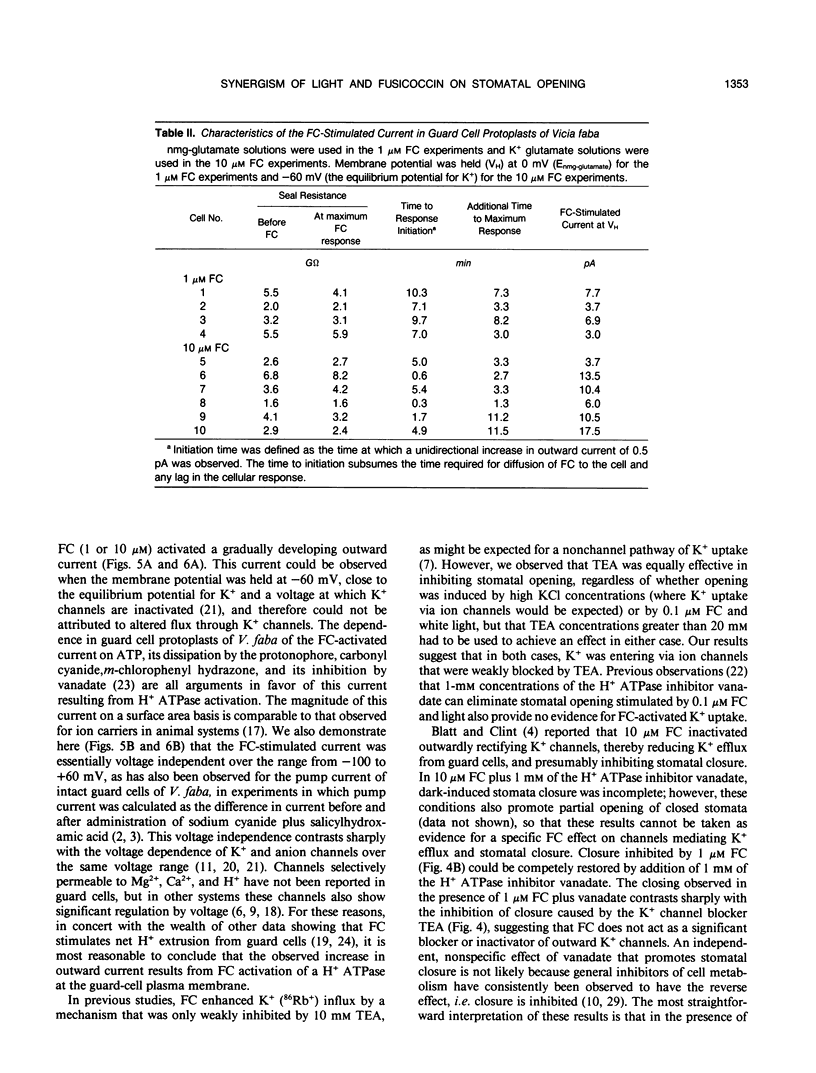
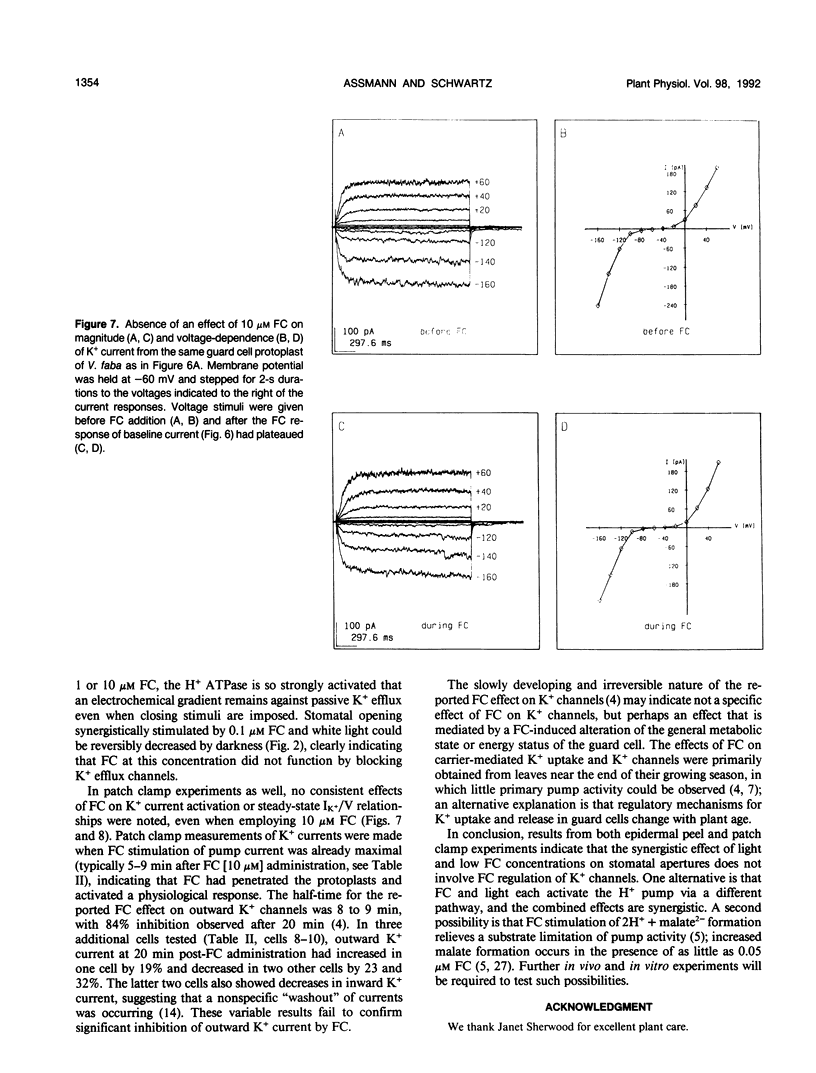
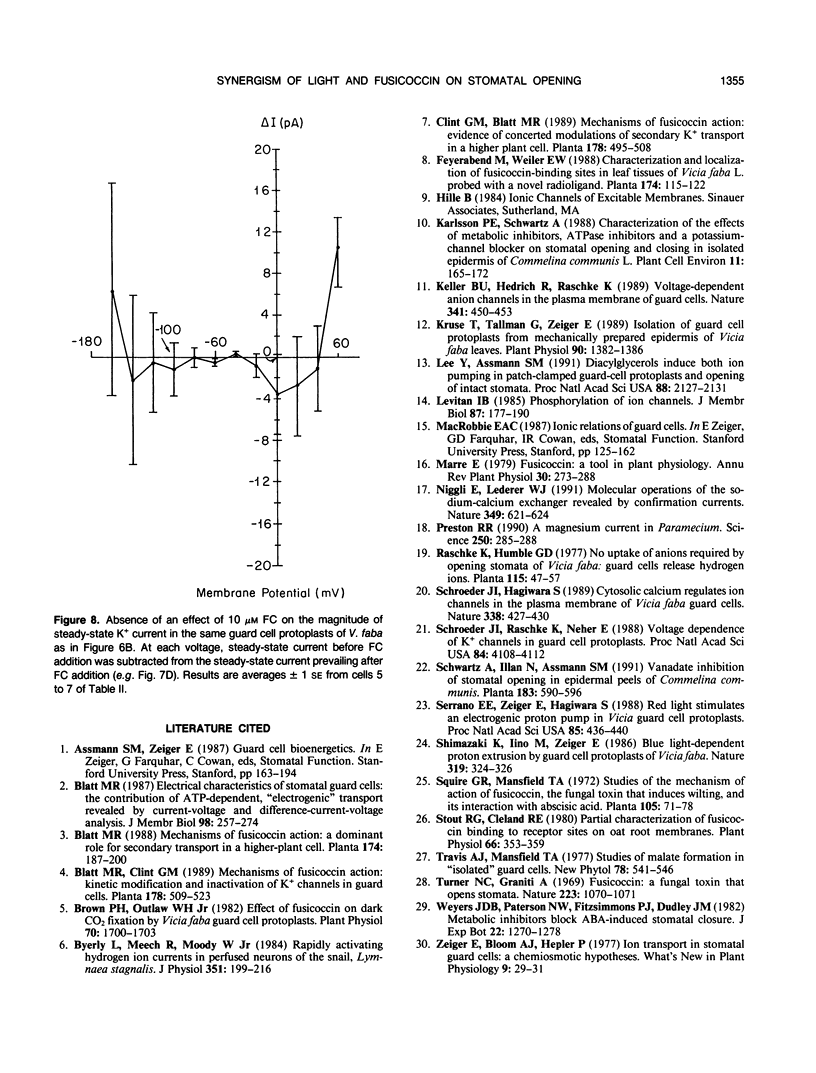
Selected References
These references are in PubMed. This may not be the complete list of references from this article.
- Brown P. H., Outlaw W. H. Effect of Fusicoccin on Dark CO(2) Fixation by Vicia faba Guard Cell Protoplasts. Plant Physiol. 1982 Dec;70(6):1700–1703. doi: 10.1104/pp.70.6.1700. [DOI] [PMC free article] [PubMed] [Google Scholar]
- Byerly L., Meech R., Moody W., Jr Rapidly activating hydrogen ion currents in perfused neurones of the snail, Lymnaea stagnalis. J Physiol. 1984 Jun;351:199–216. doi: 10.1113/jphysiol.1984.sp015241. [DOI] [PMC free article] [PubMed] [Google Scholar]
- Kruse T., Tallman G., Zeiger E. Isolation of Guard Cell Protoplasts from Mechanically Prepared Epidermis of Vicia faba Leaves. Plant Physiol. 1989 Aug;90(4):1382–1386. doi: 10.1104/pp.90.4.1382. [DOI] [PMC free article] [PubMed] [Google Scholar]
- Lee Y., Assmann S. M. Diacylglycerols induce both ion pumping in patch-clamped guard-cell protoplasts and opening of intact stomata. Proc Natl Acad Sci U S A. 1991 Mar 15;88(6):2127–2131. doi: 10.1073/pnas.88.6.2127. [DOI] [PMC free article] [PubMed] [Google Scholar]
- Levitan I. B. Phosphorylation of ion channels. J Membr Biol. 1985;87(3):177–190. doi: 10.1007/BF01871217. [DOI] [PubMed] [Google Scholar]
- Niggli E., Lederer W. J. Molecular operations of the sodium-calcium exchanger revealed by conformation currents. Nature. 1991 Feb 14;349(6310):621–624. doi: 10.1038/349621a0. [DOI] [PubMed] [Google Scholar]
- Preston R. R. A magnesium current in Paramecium. Science. 1990 Oct 12;250(4978):285–288. doi: 10.1126/science.2218533. [DOI] [PubMed] [Google Scholar]
- Schroeder J. I., Raschke K., Neher E. Voltage dependence of K channels in guard-cell protoplasts. Proc Natl Acad Sci U S A. 1987 Jun;84(12):4108–4112. doi: 10.1073/pnas.84.12.4108. [DOI] [PMC free article] [PubMed] [Google Scholar]
- Serrano E. E., Zeiger E., Hagiwara S. Red light stimulates an electrogenic proton pump in Vicia guard cell protoplasts. Proc Natl Acad Sci U S A. 1988 Jan;85(2):436–440. doi: 10.1073/pnas.85.2.436. [DOI] [PMC free article] [PubMed] [Google Scholar]
- Stout R. G., Cleland R. E. Partial characterization of fusicoccin binding to receptor sites on oat root membranes. Plant Physiol. 1980 Sep;66(3):353–359. doi: 10.1104/pp.66.3.353. [DOI] [PMC free article] [PubMed] [Google Scholar]


